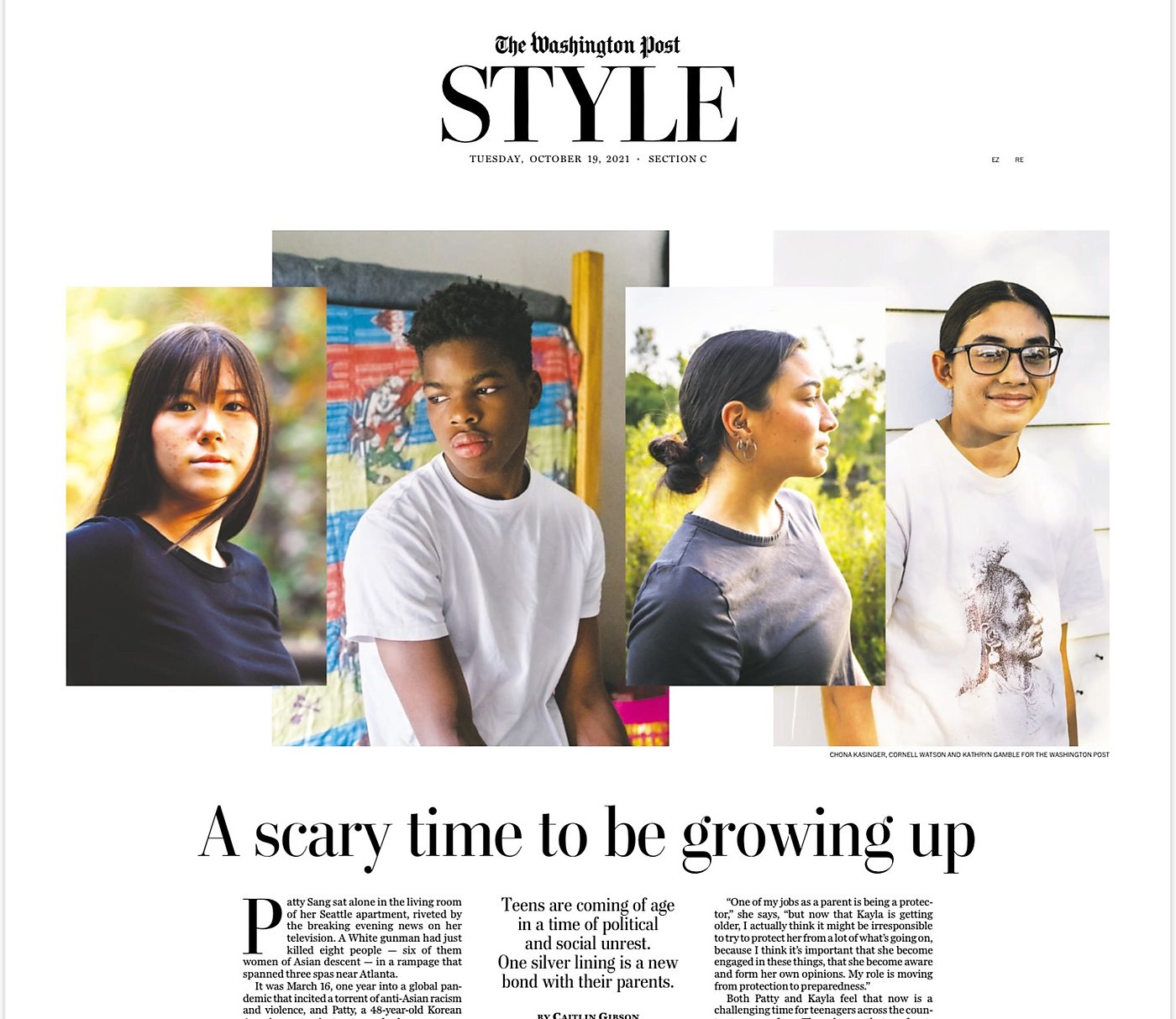It’s a scary time to be a teenager, blares the Washington Post. “51 percent of teens said they felt this is a bad time to be growing up … and 62 percent of parents said the same.” Why?
There are plenty of reasons both generations might feel this is a particularly difficult time to be a kid in high school: the prevalence of gun violence, the persistence of systemic racism, the specter of police brutality, the pressures of social media, the volatility of contemporary politics and, of course, the still enduring stress of the coronavirus pandemic.
Then there is the existential threat of climate change, which loomed especially large for parents and teens interviewed by The Post.
OK, some bad stuff there. But the article doesn’t seem even to mention any past era. Yet it’s clearly framed that “now is a challenging time for teenagers … a bad time to be growing up … a particularly difficult time to be a kid in high school.” I’m trying to think about when was a better time to be a teenager. Let’s consider some past eras. We’ll leave aside the tens of thousands of years before the Enlightenment, liberalism, and capitalism, when life for most of people was hard and short, ever vulnerable to famine, disease, and injury. Queen Anne of Great Britain and Ireland (1665–1714) lost 17 children – several were still-born, while the child who lived the longest, William, died in 1700 at the age of 11. Edward Gibbon, born 1737, had six siblings, all of whom died in infancy. So let’s move on to more modern times.
Everyone learns in school that the early Industrial Revolution had a lot of child labor. Child labor became visible then mostly because it had moved to cities and factories rather than on farms and in small shops, smithies, and the like.
It’s pretty clear that life for African-American teenagers was a lot less pleasant in the eras of slavery and Jim Crow than it is now. And ask any gay person whether they’d rather be growing up now than a generation or two ago.
As late as 1940 fewer than 30 percent of white adults had completed four years of high school, so presumably many of them started work earlier than they do now. And then the Depression arrived.
World War II was a scary time to be an adult or a teenager. After the war came worries about nuclear annihilation. I can remember being nine years old during the Cuban missile crisis and being told that if nuclear war broke out, we should go straight home to be with our families.
The Vietnam years were no picnic, either, with older brothers and friends being killed or seriously injured, and with teenage boys wondering when they might face the draft.
Let’s look at the Post’s explanation of why today is a particularly scary time:
There are plenty of reasons both generations [teens and parents] might feel this is a particularly difficult time to be a kid in high school:
the prevalence of gun violence [the U.S. homicide rate went up from the 1940s and has greatly declined since then (despite a jump last year); long-term, homicides are estimated to be much lower in the past century than in the preceding two centuries],
the persistence of systemic racism [still present, but far less than 1619–1964, and black incomes have risen substantially even since the 1980s],
the specter of police brutality [definitely a problem, but from slave patrols to Prohibition enforcement to Bull Connor and NYPD and LAPD of the Sixties, it’s not clear that the problem is worse today]
the pressures of social media [high-school bullying and mean girls go way back, but social media probably does intensify it],
the volatility of contemporary politics [the 1960s and 1970s saw a lot of assassinations, large-scale riots, and bombings]
and, of course, the still enduring stress of the coronavirus pandemic [bad, but much less dangerous for children and teenagers, and less frightening for parents, than the 1918 flu and polio up through the 1950s].
Then there is the existential threat of climate change, which loomed especially large for parents and teens interviewed by The Post [a long-term risk, but the fear of nuclear war from 1945 into the 1980s was more immediate].
I don’t mean to make light of challenges that teenagers and their parents feel today. But looking back at history, both recent and longer-term, reminds us that growing up — indeed, just staying alive till the age of 18 — has always involved challenges. And I’m unconvinced that today’s challenges are greater than those in the past. The very fact that child mortality and teen deaths have fallen dramatically is a pretty basic improvement. Indeed, this article’s vague assumption of a better past — without climate change and gun violence — is much like social conservatives’ rosy view of the 1950s before “moral decline.”
In fact, I’d say it might be helpful for teens to understand that — as a book subtitle put it – we’re living longer, healthier, more comfortable lives on a cleaner planet. We have made technological, medical, and moral progress. That doesn’t mean we should stop pushing for further improvement, but it does mean we should appreciate the progress we’ve made and our good fortune to be living at this time.

